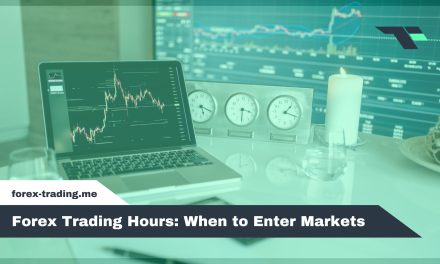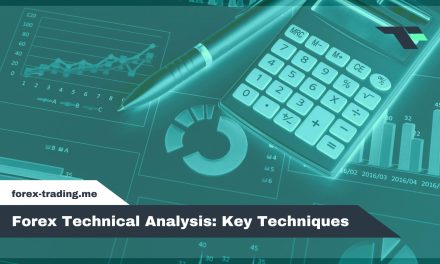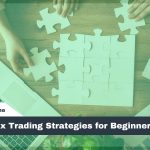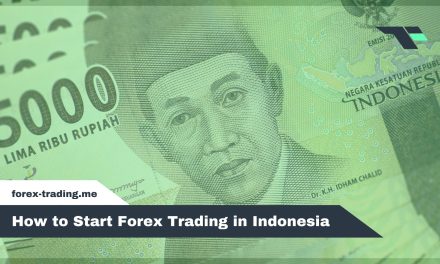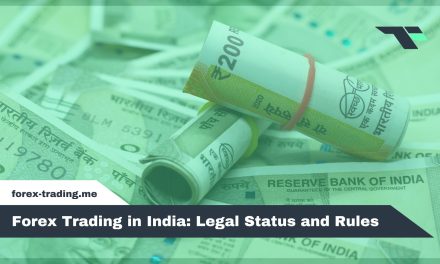
Forex vs Stock Trading: Key Differences

Forex and stock trading differ fundamentally in structure and operation. Forex involves currency pair trading in decentralized markets with $7.5 trillion daily volume, 24-hour accessibility, and leverage ratios up to 500:1 for retail traders. Stock markets feature centralized exchanges with $368 billion daily turnover, fixed trading hours, and conservative 2:1 to 4:1 leverage ratios. Forex costs involve bid-ask spreads while stock trading traditionally uses commissions, though many platforms now offer commission-free options. Understanding these distinctions helps traders make informed decisions about which market aligns with their goals and risk tolerance.
Table of Contents
Introduction to Forex vs Stock Trading
The forex market facilitates the exchange of global currencies with over US$7.5 trillion in daily trading volume, while stock markets enable investors to buy and sell company shares with approximately US$368 billion in average daily turnover worldwide. These two financial markets attract different trader profiles, from day traders seeking short-term currency fluctuations to long-term investors building equity portfolios for wealth accumulation. Understanding the fundamental differences between forex and stock trading helps market participants identify which environment better aligns with their financial objectives, risk tolerance, and available time commitment.
Defining Forex and Stock Markets
Two distinct financial markets dominate global trading activity, each offering unique opportunities for profit generation through fundamentally different mechanisms. The forex market facilitates currency exchange, where traders buy and sell currency pairs like EUR/USD, USD/JPY, and GBP/USD through decentralized liquidity pools. Participants speculate on relative currency strength, profiting from exchange rate fluctuations between nations’ monetary units.
Stock markets, conversely, enable equity trading through centralized exchanges where company shares represent ownership stakes. The NYSE lists over 2,400 companies while Nasdaq features over 3,300, providing investors access to corporate profits and growth potential. While forex traders exchange currencies as financial instruments, stock traders purchase actual company ownership, creating fundamentally different investment dynamics, risk profiles, and profit mechanisms within each market structure.
Trader Profiles and Goals
Understanding market fundamentals provides the foundation for examining how different trader personalities and investment objectives shape market participation patterns. Retail traders gravitate toward different markets based on their risk appetite and time horizons. Day traders often prefer forex markets due to 24-hour accessibility and high liquidity, while long-term investors typically favor stock markets for dividend income and capital appreciation potential.
Institutional investors dominate forex trading, comprising approximately 70% of total volume through banks, hedge funds, and corporations managing currency exposure. In contrast, retail stock traders represent roughly 20% of U.S. equity trading volume, reflecting broader individual participation in equity markets.
Speculators seek short-term price movements in both markets, while conservative investors generally prefer stocks for their tangible business ownership and historical growth patterns over extended periods.
Market Hours & Liquidity in Forex and Stock Trading
Market hours and liquidity represent fundamental operational differences that distinguish forex from stock trading environments. The forex market operates continuously across a 24-hour cycle through overlapping global sessions, while stock exchanges typically maintain fixed daily schedules of approximately 6.5 hours during weekdays. These contrasting timeframes directly influence when traders can execute positions and affect the depth of available market liquidity throughout different periods.
Forex Market Trading Cycle
When global currency markets operate around the clock, traders gain access to continuous opportunities that stock markets cannot match due to their fixed exchange hours. The forex market follows a systematic 24-hour cycle, beginning with the Tokyo session, shifting through London, and concluding with New York. Each session brings distinct characteristics and volume patterns that experienced traders monitor closely.
The London/New York overlap period, occurring between 8 AM and 12 PM Eastern Time, represents the market’s most active window, accounting for approximately 36% of daily forex volume. During this timeframe, major currency pairs experience heightened volatility and tighter spreads. The Tokyo/London overlap generates roughly 17% of total volume, creating secondary opportunities for traders. Understanding these cyclical patterns enables market participants to optimize their trading schedules around peak liquidity periods.
Stock Exchange Sessions
Unlike the continuous 24-hour forex cycle, stock exchanges operate within clearly defined sessions that create concentrated periods of trading activity and liquidity. Major U.S. exchanges like the NYSE and Nasdaq conduct regular trading from 9:30 AM to 4:00 PM Eastern Time on business days, excluding exchange holidays.
Extended hours trading expands these windows considerably. Pre-market sessions run from 4:00 AM to 9:30 AM ET, while after-hours trading continues from 4:00 PM to 8:00 PM ET. These extended periods accommodate earnings announcements, news reactions, and international market developments that occur outside regular hours.
Approximately 20% of daily equity volume occurs during extended hours sessions, though liquidity remains lower than regular trading periods. This concentrated structure contrasts sharply with forex’s distributed global trading cycle.
Volatility & Leverage in Forex and Stock Trading
Volatility and leverage represent two fundamental forces that distinguish forex from stock trading, with each market exhibiting unique patterns of price movement and margin requirements. While forex pairs like EUR/USD typically experience modest daily fluctuations averaging 0.6%, the availability of retail leverage ranging from 10:1 to 50:1 can dramatically amplify both potential returns and losses. Stock markets generally display different volatility characteristics and utilize lower leverage ratios, creating distinct risk-reward profiles that traders must carefully evaluate based on their experience level and risk tolerance.
Leverage Mechanics and Risks
Leverage ratios in forex trading typically range from 20:1 to 500:1, allowing traders to control considerably larger positions than their actual capital would permit, while stock trading generally offers more conservative leverage of 2:1 to 4:1 for retail investors. A 50:1 leverage means US$1,000 equity controls US$50,000 in currency, amplifying both potential gains and losses proportionally. Brokers monitor margin levels closely, issuing margin calls when equity falls below 100% of used margin. Key metrics include free margin, which represents available capital for new positions, and margin level, calculated as equity divided by used margin. When margin levels drop critically low, brokers may execute stop-outs, automatically closing positions to prevent account balances from turning negative and protect both trader and broker interests.
Equity Volatility Patterns
Stock markets exhibit distinct volatility patterns that differ markedly from the relatively predictable fluctuations found in major currency pairs. Individual stocks experience varying degrees of price swings influenced by company-specific events, sector dynamics, and broader market sentiment. The CBOE Volatility Index (VIX), averaging around 18 in recent years, measures market fear and uncertainty levels affecting equity prices.
Key characteristics of equity volatility include:
- Daily price movements – Large-cap stocks commonly experience 2-3% daily price fluctuations during normal trading conditions
- Earnings season amplification – Quarterly earnings announcements create heightened volatility spikes as investors react to financial results
- Market correction periods – Broader economic uncertainty triggers systematic selloffs affecting entire sectors simultaneously
These patterns create both opportunities and risks that traders must carefully evaluate when developing their market strategies.
Costs, Fees & Spreads in Forex and Stock Trading
Transaction costs represent a critical factor when comparing forex and stock trading, as each market employs fundamentally different fee structures that directly impact profitability. Forex trading primarily operates through spreads, which reflect the difference between bid and ask prices, while stock trading traditionally involves commissions charged per transaction, though many brokers now offer commission-free equity trades. Understanding these cost differences becomes essential for traders evaluating which market aligns better with their trading frequency, position sizes, and overall strategy.
Forex Spreads vs Commissions
When traders evaluate the cost structures of forex and stock markets, they encounter fundamentally different fee mechanisms that directly impact profitability. Forex brokers primarily earn through bid-ask spreads, while stock brokers typically charge direct commissions per transaction.
Forex spread structures operate through several models:
- Fixed spreads – Major currency pairs start at approximately 1.0 pip, providing predictable costs but potentially wider pricing during volatile periods
- Floating spreads – Variable pricing that tightens during liquid market conditions but widens during news events or low liquidity periods
- ECN commission accounts – Direct market access with raw spreads plus commissions ranging from $5-7 per standard lot per side
STP (Straight Through Processing) brokers route orders directly to liquidity providers, while ECN brokers aggregate pricing from multiple sources, offering transparency but requiring commission payments alongside tighter spreads.
Stock Trading Commissions
Equity markets operate under distinctly different cost structures that contrast sharply with the spread-based pricing found in currency trading. Stock trading involves multiple fee layers that affect overall profitability.
| Fee Type | Typical Cost |
|---|---|
| Per-share fee | $0.005 per share ($1 minimum) |
| Per-trade fee | Varies by broker |
| SEC fee | $22 per $1 million principal |
| FINRA fee | Varies by transaction |
| Platform subscription | Monthly/annual fees |
Brokers employ various models including per-trade commissions, per-share pricing structures, and subscription-based platforms. Regulatory fees such as SEC charges impose additional costs at roughly $22 per million dollars of principal traded. Some platforms implement per-share fees starting at $0.005 with minimum thresholds of $1. These multiple cost layers require careful calculation to determine true trading expenses, particularly for high-frequency strategies.
Regulation & Accessibility in Forex and Stock Trading
Both forex and stock markets operate under distinct regulatory frameworks that directly impact trader accessibility and safety. Forex markets face varying oversight levels globally, with U.S. brokers requiring CFTC registration and NFA membership, while European brokers must comply with MiFID II regulations that include negative-balance protection for retail traders. Stock markets typically maintain more standardized regulatory structures, with entities like the SEC overseeing U.S. exchanges and establishing consistent rules for market participants across different asset classes.
Forex Market Oversight
Regulatory frameworks governing forex trading vary greatly by jurisdiction, creating a complex landscape where trader protections depend largely on broker location and licensing. Major regulatory bodies implement specific measures to safeguard retail traders from excessive risk exposure and fraudulent practices.
Key regulatory protections include:
- Leverage limitations – ESMA restricts EU retail traders to maximum 30:1 leverage on major currency pairs, reducing potential losses from overleveraged positions.
- Capital requirements – The NFA mandates forex dealers maintain minimum net capital of $20 million, ensuring brokers possess sufficient funds to meet client obligations.
- Account segregation – Regulated brokers must separate client funds from operational capital, protecting trader deposits even if the brokerage faces financial difficulties.
These measures vary considerably between jurisdictions, making broker selection essential for trader safety.
Stock Market Regulation
Securities laws create a thorough framework that governs stock market activities through mandatory disclosure requirements, anti-fraud provisions, and systematic market surveillance. Public companies must file quarterly 10-Q and annual 10-K reports, providing investors with regular financial transparency. These disclosure rules guarantee material information reaches the market simultaneously, preventing unfair advantages through insider trading violations.
U.S. exchanges implement circuit breakers at 7%, 13%, and 20% market declines to halt trading during extreme volatility, protecting investors from panic-driven crashes. Reporting requirements mandate companies disclose significant events, executive compensation, and ownership changes within specified timeframes. Market surveillance systems monitor trading patterns to detect manipulation and enforce compliance with securities regulations, creating a structured environment where investor protections remain paramount in stock market operations.
Taxation & Reporting in Forex and Stock Trading
Tax obligations differ considerably between forex and stock trading, with each market subject to distinct reporting requirements and rate structures that directly impact net returns. Forex gains typically fall under ordinary income tax rates in many jurisdictions, while stock profits often qualify for more favorable capital gains treatment depending on holding periods. Understanding these tax distinctions becomes essential for traders seeking to optimize their after-tax performance and guarantee proper compliance with reporting obligations.
Forex Tax Treatment
When traders engage in foreign exchange transactions, they encounter a particularly different tax landscape compared to traditional stock investments, as forex gains and losses are typically classified as ordinary income rather than capital gains.
This classification subjects forex profits to standard income tax rates, which can be notably higher than the preferential capital gains rates applied to stock transactions. Retail forex trading often operates under mark-to-market accounting rules, requiring traders to report all open positions as if they were closed at year-end.
Key forex tax considerations include:
- Mark-to-market accounting requires annual reporting of unrealized gains and losses on open currency positions
- Ordinary income treatment means forex profits face higher tax rates than long-term capital gains from stocks
- Loss limitations allow forex losses to offset other ordinary income up to specific annual thresholds
Stock Trading Tax Rules
Unlike the straightforward ordinary income classification that governs forex transactions, stock trading operates under a more nuanced tax framework that distinguishes between short-term and long-term capital gains based on holding periods. Positions held for one year or less qualify as short-term gains, taxed as ordinary income at rates up to 37%. Assets held longer than one year receive preferential long-term capital gains treatment, with maximum rates of 20% for high earners.
| Holding Period | Tax Rate | Additional Considerations |
|---|---|---|
| Less than 1 year | Ordinary income rates (up to 37%) | No preferential treatment |
| More than 1 year | 0%, 15%, or 20% depending on income | Preferential long-term rates |
| Dividend income | Qualified: 0%, 15%, or 20% | Must meet holding requirements |
| Wash sale transactions | Loss recognition disallowed | 30-day repurchase rule applies |
| Net investment income | Additional 3.8% tax | High-income threshold trigger |
The wash-sale rule prevents traders from claiming losses on securities repurchased within thirty days.
Psychology & Risk Management in Forex and Stock Trading
Successful trading in both forex and stock markets requires mastering emotional discipline and implementing systematic risk management practices that prevent costly psychological pitfalls. Studies indicate that over 80% of retail traders lose money within their first year, largely due to emotion-driven decisions and inadequate position sizing strategies. Traders who develop structured approaches to controlling fear, greed, and overconfidence while maintaining proper risk-reward ratios greatly improve their chances of long-term profitability across both market types.
Emotional Discipline Techniques
Emotional discipline separates consistently profitable traders from those who struggle with erratic performance across both forex and stock markets. Both trading environments demand rigorous psychological control to navigate volatility and market uncertainty effectively.
Successful traders implement specific techniques to maintain emotional stability and decision-making clarity:
- Trading Journals – Documenting each trade’s rationale, outcome, and emotional state helps traders identify patterns and improve win rates by up to 21% through systematic analysis.
- Pre-Trade Checklists – Standardized routines verify entry criteria and risk parameters before executing positions, reducing emotional trading breaches by 35% and maintaining strategy adherence.
- Meditation and Mindfulness – Regular meditation practice enhances focus, reduces stress responses, and builds awareness of cognitive biases that commonly derail trading performance.
These discipline techniques prove equally valuable whether trading currency pairs or individual stocks.
Position Sizing Strategies
Position sizing represents the cornerstone of effective risk management, determining how much capital traders allocate to each trade based on their account size, risk tolerance, and market conditions. Fixed-fractional methods commonly recommend risking 1–2% per position, providing consistent exposure regardless of market volatility. This approach prevents catastrophic losses while maintaining sufficient capital for future opportunities. The Kelly Criterion offers a mathematical framework for ideal position sizing, calculating the perfect risk percentage based on win rates and average profit-to-loss ratios. ATR-based sizing adapts to changing market volatility, automatically adjusting position sizes when price movements increase or decrease. Volatility-based approaches prove particularly valuable in forex markets, where currency pairs exhibit varying degrees of price fluctuation, ensuring traders maintain appropriate risk levels across different trading instruments.
Technology & Infrastructure in Forex and Stock Trading
The technological infrastructure supporting forex and stock trading differs greatly in platform preferences, execution speed requirements, and algorithmic trading capabilities. Over 70% of forex traders globally rely on MetaTrader platforms such as MT4 and MT5, while stock traders often utilize broker-specific platforms or direct market access systems that connect to individual exchanges. These platform distinctions reflect deeper differences in market structure, where forex’s decentralized nature requires different technological solutions compared to the centralized exchanges that characterize stock trading.
Trading Platforms Comparison
When evaluating trading platforms, both forex and stock markets offer sophisticated technological infrastructure, though their platform ecosystems have evolved along different paths to serve distinct trading needs.
Forex trading mainly relies on specialized platforms like MetaTrader 4, launched in 2005, and MetaTrader 5, introduced in 2010 with multi-asset support. These platforms emphasize automated trading capabilities, extensive technical indicators, and expert advisor functionality. Stock trading platforms typically focus on thorough market data, real-time news integration, and robust order management systems.
Key platform considerations include:
- Order execution capabilities – Forex platforms prioritize speed and algorithmic trading, while stock platforms emphasize order routing and market access
- Charting sophistication – TradingView serves over 30 million users across both markets with advanced analytical tools
- Mobile accessibility – Both ecosystems offer full-featured mobile applications supporting complete trading workflows
Algorithmic Trading Tools
Automation revolutionizes how traders execute strategies across both forex and stock markets, with algorithmic trading tools becoming increasingly sophisticated and accessible to retail participants. Modern platforms provide all-encompassing solutions for both markets, though implementation differs markedly between asset classes.
| Feature | Forex | Stocks |
|---|---|---|
| API Execution Speed | Sub-millisecond in major hubs | Variable by exchange |
| Backtesting Data | 20+ years tick data available | Historical fundamental data |
| Strategy Builders | EA-focused platforms | Screener-based tools |
| Market Hours | 24/5 automation capability | Session-limited execution |
| Cost Structure | Spread-based algorithms | Commission-optimized routing |
Forex markets excel in continuous automation opportunities, while stock markets offer sophisticated fundamental analysis integration. Expert Advisors dominate forex algorithmic trading, whereas stock platforms emphasize screening and technical scanning. Both markets provide robust backtesting capabilities, enabling traders to validate strategies before live implementation across different market conditions.
Fresh Stats & Unique Insights on Forex and Stock Trading
When examining daily trading volume, the forex market processes approximately $7.5 trillion in transactions each day, dwarfing the global stock market’s combined daily turnover of roughly $200-300 billion. Within forex trading specifically, FX swaps represent 50.7% of overall forex transactions, highlighting how currency derivatives and financing instruments dominate this market rather than simple spot trading. This volume disparity underscores the forex market’s role as the world’s most liquid financial market, while stock markets compensate through their substantial cumulative market capitalization, with the U.S. equity market alone exceeding $50 trillion in total value.
Daily Market Volume Comparison
Every trading day, the foreign exchange market processes approximately US$7.5 trillion in transactions, dwarfing the stock market‘s daily volume of roughly US$368 billion by more than twenty-fold. This massive disparity reflects the fundamental nature of each market, where currencies trade continuously across global time zones while equity markets operate within specific regional hours.
The volume difference creates distinct trading environments that affect execution, pricing, and strategy development:
- Liquidity advantages: Forex’s massive turnover enables traders to enter and exit positions with minimal price impact, even on large transactions.
- Market accessibility: Higher volumes translate to tighter bid-ask spreads in major currency pairs compared to many individual stocks.
- Price stability: The sheer scale of forex trading reduces the likelihood of dramatic price gaps during normal market conditions.
FX Swaps Market Share
A closer examination of forex market composition reveals that FX swaps dominate currency trading activity, accounting for 50.7% of the market’s massive daily turnover. This substantial share demonstrates that institutional participants rely heavily on swap instruments for hedging, speculation, and liquidity management rather than simple currency exchanges.
Spot transactions, which represent immediate currency purchases and sales, comprise only about 30% of total forex volume. This distribution highlights the sophisticated nature of modern currency markets, where complex derivatives and structured products drive the majority of trading activity.
The prevalence of FX swaps indicates that forex markets serve more institutional and professional traders compared to stock markets, where retail investors can more easily participate through straightforward share purchases without requiring knowledge of derivative instruments or swap mechanics.
Choosing Your Trading Path in Forex and Stock Trading
Selecting the appropriate trading path requires traders to evaluate their risk tolerance, preferred trading style, and available resources against the distinct characteristics of forex and stock markets. Risk assessment becomes essential since forex trading typically demands higher risk tolerance due to increased volatility and leverage options, while stock trading offers more predictable patterns for conservative investors. Account requirements and available tools vary markedly between markets, with forex platforms often requiring smaller initial deposits but demanding more sophisticated risk management strategies compared to stock trading accounts.
Assessing Risk and Style
Before committing capital to either forex or stock markets, traders must conduct an honest assessment of their risk tolerance, available time, and preferred trading approach. Conservative traders typically limit portfolio volatility to 5–10%, making stock markets more suitable due to their generally lower leverage requirements. Day traders, who represent roughly 50% of retail forex participants, gravitate toward currency markets for their 24-hour accessibility and high liquidity.
Key factors to evaluate include:
- Time availability – Forex requires monitoring multiple time zones, while stock markets operate during specific hours
- Capital requirements – Forex allows smaller initial deposits with higher leverage, stocks typically demand more capital
- Risk appetite – Forex offers greater volatility potential, stocks provide more predictable long-term growth patterns
Account Requirements and Tools
While risk tolerance shapes trading decisions, the practical requirements for entering forex and stock markets differ markedly regarding capital demands and technological infrastructure. Forex trading accommodates smaller budgets, with many brokers accepting minimum deposits as low as US$100. This accessibility extends to demo accounts, allowing practice without financial commitment before moving to live accounts.
Stock trading presents higher barriers, particularly for margin accounts. Full-service equity brokers typically require US$2,000–25,000 minimum deposits for margin trading capabilities. However, cash accounts often demand lower initial funding.
Both markets offer sophisticated trading platforms, though forex brokers frequently provide more extensive educational resources and lower margin call levels. The technological tools remain comparable, featuring real-time charts, news feeds, and automated trading options across both markets.
Conclusion
The choice between forex and stock trading ultimately depends on individual circumstances, risk tolerance, and trading objectives. Forex offers 24-hour accessibility, high leverage, and macroeconomic focus, while stocks provide company-specific opportunities with clearer fundamental analysis frameworks. Both markets present distinct advantages and challenges regarding costs, regulation, and capital requirements. Successful traders evaluate their personal situation, available capital, time commitment, and preferred analytical approach when selecting their best trading environment.


